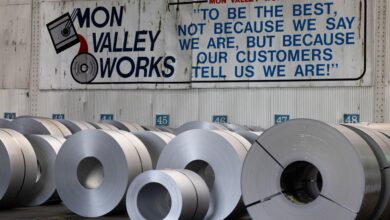Here are the three reasons why tariffs have yet to drive inflation higher

Despite concerns about the impact of President Donald Trump’s tariffs on inflation, recent data suggests that price increases have remained relatively low. In May, consumer and producer prices only rose by 0.1%, signaling that the inflation scare may be over for now.
However, economists believe that the coming months could see price hikes as a result of the tariffs imposed by the Trump administration. While some areas sensitive to higher import costs have experienced price increases, overall inflation has been kept in check by several factors.
One factor contributing to the current low inflation rates is companies stockpiling imported goods before the tariffs went into effect on April 2. Additionally, there is a lag time for these charges to impact the real economy, and companies are facing limited pricing power as consumers become more cautious with their spending.
Economists like Aichi Amemiya from Nomura predict that the impact of tariffs will likely materialize in the coming months, despite the current benign inflation readings. Certain products, such as canned fruits and vegetables, roasted coffee, tobacco, and durable goods like major appliances and computers, have already seen price increases.
The Federal Reserve’s recent report on economic activity suggests that price increases may be on the horizon, but some companies are hesitant to pass on higher costs to consumers. The Fed is closely monitoring the situation and may consider lowering interest rates later in the year if inflation remains low.
Overall, the impact of tariffs on inflation remains uncertain, and consumer behavior will play a crucial role in determining whether price increases are temporary or long-lasting. As economists and policymakers continue to assess the situation, it is essential to consider the potential consequences of trade policies on the economy and consumer spending habits.





